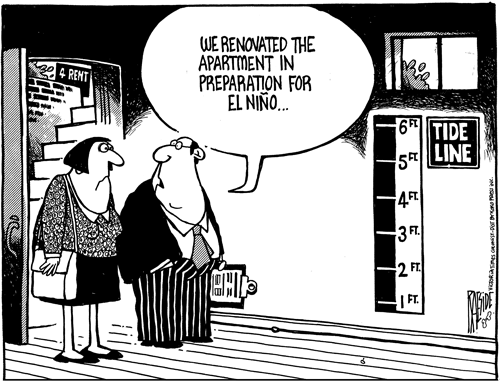Newsletter: El Nino and Commodities
The El Nino Southern Oscillator appears to affect the demand for oil and the supply of grains.

In the Market Climatology chapter of the hypertext book I use the El Nino Southern Oscillator (ENSO) as an example long-term regime structure that influences shorter-term cycles. ENSO encompasses periods of warming and cooling water temperatures in the south Pacific which influence weather patterns across the world. While the seasons come and go as always, their nature changes according to which ENSO regime the world is experiencing.
ENSO is not a market or economic regime indicator, but it may have some impact on certain aspects of economic life. In particular, ENSO affects the supply of many agricultural commodities and also the demand for energy. Commodities are a special asset class. At First Quadrant we made the case that commodities were a weak asset class since the drivers of industrial commodities are quite different than the drivers of agricultural commodities. The former is influenced primarily by demand as the business cycle changes while the latter is more influenced by supply, largely determined by the weather.
Now that we are experiencing a climate related regime shift from La Nina to El Nino, I was inspired to see whether I could use ENSO as more than an analogy. Could ENSO have bias commodity prices during those warm/cool regimes? The answer is possibly, yes.
